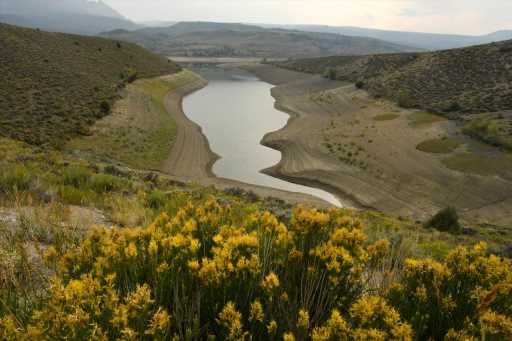The average temperature for the last six months is the hottest recorded in Colorado and the country as a whole, according to data released this week by the National Oceanic and Atmospheric Administration.
The next-highest six-month average temperature peak in Colorado came during the 1930s Dust Bowl era, the data shows.
Colorado, and the rest of the country is unlikely to see an exact repeat of the Dust Bowl because we’re able to manage the land better than during the 1930s, Climatologist Becky Bolinger of Colorado State University said. But there are some similarities in the extreme temperatures, abnormally dry climate and the dust storm that swept from Colorado to the Midwest last month.
“We are currently experiencing climate change,” Bolinger said. “It’s not something that happens in the future. We have it happening now.”
The federal data shows that the average temperature in Colorado between July and December of 2021 reached 53.4 degrees, more than a degree and a half warmer than the same six-month span in 2020.
The next highest six-month average in Colorado came in 1933 at 52.1 degrees, the only other time in the state’s record when that average exceeded 52 degrees, the data shows.
Nationally, the six-month average hit 59.77 degrees last year, more than a full degree higher than during the same period in 2020, the data shows. The next closest peak nationally came in 2015, when the six-month average reached 59.32 degrees. The national July-December average has only exceeded 59 degrees in 1998, 2015, 2016 and last year.
Relatively speaking the average temperature increase, in Colorado and across the country, might appear slight but it makes a large difference, Bolinger said. Higher temperatures lead to more moisture and water lost into dry soils or to evaporation.
Those dry conditions elongate the state’s wildfire season (which many experts now describe as year-round) and increase the amount of fuel that can exacerbate the fires once they start.
As an example, Bolinger nodded to the Marshall fire, which sparked late last month in Boulder County.
Following that fire and considering the increased risk due to climate change, experts told The Denver Post that High Plains suburbs need more work to prevent or mitigate fires in the future. In addition, temperatures in parts of western Colorado have been rising at nearly double the rate as average global temperatures, scientists say.
Because the hotter, drier climate worsens water supply issues, particularly in the Colorado River basin on the Western Slope, climatologists have been keeping a sharp eye on snowpack levels and drought conditions across the state.
Currently, most of the Western Slope has now recorded above normal snowpack for this time of year, Bolinger said. But that trend needs to continue into the spring in order to recharge parched soils and refill water reservoirs.
Recent snowfall to the east as well likely means drought conditions, analyzed by the National Drought Mitigation Center, might improve in the coming weeks, Bolinger added. Even so, less than 5% of the state’s landmass is considered “abnormally dry” while the rest is considered to be in either “moderate,” “severe” or “extreme” drought.
Source: Read Full Article
